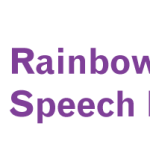A SENSORY-INFORMED APPROACH TO INTERVENTION
 Sensory refers to how our bodies receive information from the world around us, and pass this onto the brain for processing. This helps us to interact and learn about our environment. There are 8 senses that form the basis of our sensory system.
Sensory refers to how our bodies receive information from the world around us, and pass this onto the brain for processing. This helps us to interact and learn about our environment. There are 8 senses that form the basis of our sensory system.
Visual Sense: the ability to understand and interpret what is seen.
Auditory Sense: the ability to interpret information that is heard.
Gustatory Sense: the ability to interpret information regarding taste in the mouth.
Olfactory Sense: the ability to interpret smells.
Tactile Sense: the ability to interpret information coming into the body by the skin.
Proprioceptive Sense: the ability to interpret where your body parts are in relation to each other.
Vestibular Sense: the ability to interpret information relating to movement and balance (i.e., how fast or slow we are moving, eyes and body, body position, and orientation in space).
Interoception: the ability to interpret internal sensations and cues, such as recognising when you are hungry or need to go to the toilet.
Everyone’s sensory system is different and how we process sensory information in the world around us also differs. These differences relate to the amount of sensory input that an individual can tolerate. Individuals can be:
Hyposensitive: meaning they need a higher intensity of that sensation to recognise input.
Hypersensitive: meaning that an individual doesn’t need as much of a certain sensation, with sometimes “small” amounts of input perceived as overwhelming.
Why do we need to adopt a sensory-informed approach to intervention?
The brain plays a pivotal role in the ability to regulate reactions to sensory input to enable an individual to demonstrate the appropriate level of alertness needed for learning and development. This is referred to as the ‘Ready State for Learning’. When an individual experiences difficulty maintaining this ready state due to challenges processing the above senses, we use the term dysregulated. We are unable to teach a child anything when they are dysregulated! Regulation comes first – engagement and communication follows. This is particularly explored in the DIR® developmental levels (pictured).
A study conducted by Kirby et al (2022) found that 74% of autistic children presented with documented sensory differences and 2021 statistics shared by the National Disability Insurance Scheme (NDIS) found that 31% of participants were insured for a primary diagnosis of Autism Spectrum Disorder (ASD), with an additional 5% presenting with ASD as a secondary disability. This represents a large portion of individuals accessing services of whom require a sensory-informed approach to care – so it’s imperative we get it right!
Through utilising a sensory-informed approach to work with, and not against our client’s sensory needs, we are achieving the biggest ‘bang for our buck’ from an intervention perspective, whilst also supporting individual’s self-awareness and shared problem solving. Occupational Therapists are vital in assessing and supporting an individual to respond in a healthy and safe way to the sensory world around them. As such, it is imperative to collaborate closely with our Occupational Therapy colleagues to understand a participant’s individual sensory needs. This enables the Speech Pathologist to implement these strategies during sessions to support engagement in tasks and retainment of session-learnt skills. Collaborative Speech Pathology and Occupational Therapy sessions are a winning combination!
On a personal level, I cannot thank my wonderful OT colleagues enough for the integral role they play in enabling communication outcomes for our participants with sensory processing challenges. I am forever grateful for their continued generosity in providing education and strategies to support shared clients on their intervention journey ♥
Compiled by Rachel Finney Speech Pathologist


